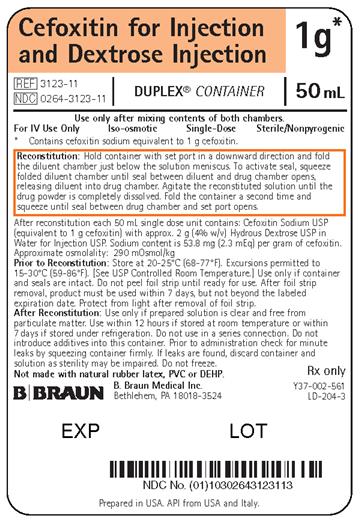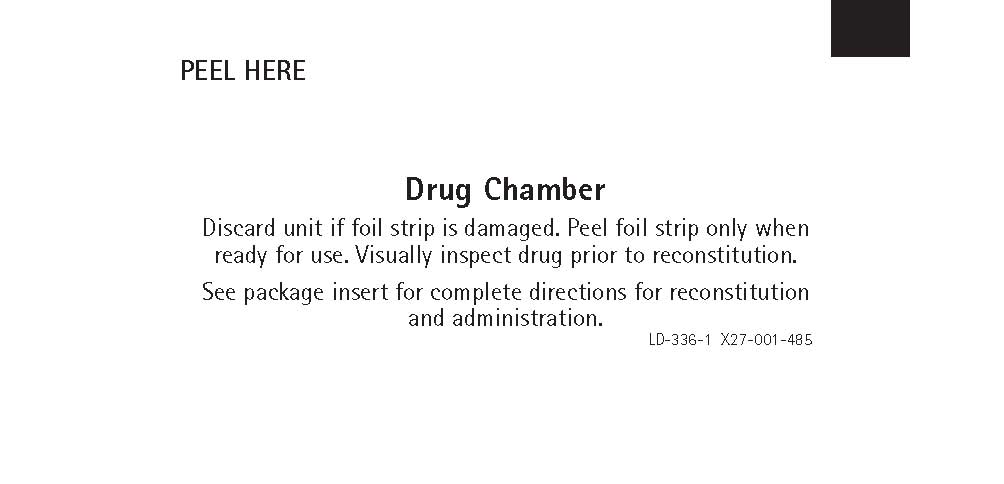Do you know that important immune protective proteins are present in breast milk? Breast milk also contains required vitamins, minerals, saturated and un saturated fats. These things are extremely important for development of healthy brain. If you are taking any medicine for short term or for the chronic reason then that passes in breast milk as well, that is why you should always check the drug with your health care provider. Here at DrLact we try to analyze drugs based on available researches and in this sheet we will present our analysis for Cefoxitin And Dextrose | Cefoxitin Sodium Injection.
What is Cefoxitin And Dextrose | Cefoxitin Sodium Injection used for?
Cefoxitin for Injection and Dextrose Injection is a cephalosporin antibacterial indicated for the treatment of the following infections caused by susceptible isolates of the designated bacteria (1): Lower respiratory tract infections (1.1); Urinary tract infections (1.2); Intra-abdominal infections (1.3); Gynecological infections (1.4); Septicemia (1.5); Bone and joint infections (1.6); Skin and skin structure infections (1.7); Prophylaxis (1.8). To reduce the development of drug-resistant bacteria and maintain the effectiveness of Cefoxitin for Injection and Dextrose Injection and other antibacterial drugs, Cefoxitin for Injection and Dextrose Injection should be used only to treat or prevent infections that are proven or strongly suspected to be caused by bacteria (1.9). 1.1 Lower Respiratory Tract Infections Cefoxitin for Injection and Dextrose Injection is indicated for the treatment of lower respiratory tract infections, including pneumonia and lung abscess, caused by Streptococcus pneumoniae, other streptococci (excluding enterococci, e.g., Enterococcus faecalis [formerly Streptococcus faecalis]), Staphylococcus aureus (including penicillinase-producing strains), Escherichia coli, Klebsiella species, Haemophilus influenzae, and Bacteroides species. 1.2 Urinary Tract Infections Cefoxitin for Injection and Dextrose Injection is indicated for the treatment of urinary tract infections caused by Escherichia coli, Klebsiella species, Proteus mirabilis, Morganella morganii, Proteus vulgaris and Providencia species (including P. rettgeri). 1.3 Intra-abdominal Infections Cefoxitin for Injection and Dextrose Injection is indicated for the treatment of intra-abdominal infections, including peritonitis and intra-abdominal abscess, caused by Escherichia coli, Klebsiella species, Bacteroides species including Bacteroides fragilis, and Clostridium species. 1.4 Gynecological Infections Cefoxitin for Injection and Dextrose Injection is indicated for the treatment of gynecological infections, including endometritis, pelvic cellulitis, and pelvic inflammatory disease caused by Escherichia coli, Neisseria gonorrhoeae (including penicillinase-producing strains), Bacteroides species including B. fragilis, Clostridium species, Peptococcus niger, Peptostreptococcus species, and Streptococcus agalactiae. Cefoxitin has no activity against Chlamydia trachomatis. Therefore, when cefoxitin is used in the treatment of patients with pelvic inflammatory disease and C. trachomatis is one of the suspected pathogens, appropriate anti-chlamydial coverage should be added. 1.5 Septicemia Cefoxitin for Injection and Dextrose Injection is indicated for the treatment of Septicemia caused by Streptococcus pneumoniae, Staphylococcus aureus (including penicillinase-producing strains), Escherichia coli, Klebsiella species, and Bacteroides species including B. fragilis. 1.6 Bone and Joint Infections Cefoxitin for Injection and Dextrose Injection is indicated for the treatment of bone and joint infections caused by Staphylococcus aureus (including penicillinase-producing strains). 1.7 Skin and Skin Structure Infections Cefoxitin for Injection and Dextrose Injection is indicated for the treatment of skin and skin structure infections caused by Staphylococcus aureus (including penicillinase-producing strains), Staphylococcus epidermidis, Streptococcus pyogenes and other streptococci (excluding enterococci, e.g., Enterococcus faecalis [formerly Streptococcus faecalis]), Escherichia coli, Proteus mirabilis, Klebsiella species, Bacteroides species including B. fragilis, Clostridium species, Peptococcus niger, and Peptostreptococcus species. 1.8 Prophylaxis Cefoxitin for Injection and Dextrose Injection is indicated for the prophylaxis of infection in patients undergoing uncontaminated gastrointestinal surgery, vaginal hysterectomy, abdominal hysterectomy, or cesarean section. If there are signs of infection, specimens for culture should be obtained for identification of the causative organism so that appropriate treatment may be instituted. 1.9 Usage To reduce the development of drug-resistant bacteria and maintain the effectiveness of Cefoxitin for Injection and Dextrose Injection and other antibacterial drugs, Cefoxitin for Injection and Dextrose Injection should be used only to treat or prevent infections that are proven or strongly suspected to be caused by susceptible bacteria. When culture and susceptibility information are available, they should be considered in selecting or modifying antibacterial therapy. In the absence of such data, local epidemiology and susceptibility patterns may contribute to the empiric selection of therapy.
Is using Cefoxitin And Dextrose | Cefoxitin Sodium Injection unsafe in breastfeeding? Can there be bad consequences for baby if I use it while breastfeeding?
Cefoxitin is the only one ingredient used in manufacturing of Cefoxitin And Dextrose | Cefoxitin Sodium Injection, Which makes it easier to analyze its effect in breastfeeding. As per our analysis of Cefoxitin it is safe to use Cefoxitin And Dextrose | Cefoxitin Sodium Injection while lactating. We suggest you to check further details below about Cefoxitin usage in breastfeeding.
Cefoxitin And Dextrose | Cefoxitin Sodium Injection Breastfeeding Analsys
SafeCAS Number: 33564-30-6
Second-generation cephalosporin for injection or parenteral administration. Like most cephalosporins for which data are available, excretion occurs in breast milk in very small amount and it is clinically insignificant (references from Geddes 1977 to Zhang 1997). Cephalosporins are widely used in the Pediatric practice with a good tolerance, even in the neonatal period, so it is very unlikely that in small amounts through milk would be a cause of problems in the infant. Be aware of the possibility of false negative results of cultures in febrile infants whose mothers are taking antibiotics as well as the possibility of gastroenteritis (Ito 1993) by altering the intestinal flora. American Academy of Pediatrics: Maternal Medication Usually Compatible With Breastfeeding
Cefoxitin And Dextrose | Cefoxitin Sodium Injection Breastfeeding Analsys - 2
CAS Number: 35607-66-0
Substantial information indicates that cefoxitin produces low levels in milk that are not expected to cause adverse effects in breastfed infants. Occasionally disruption of the infant's gastrointestinal flora, resulting in diarrhea or thrush have been reported with cephalosporins, but these effects have not been adequately evaluated. Cefoxitin is acceptable in nursing mothers.

I already used Cefoxitin And Dextrose | Cefoxitin Sodium Injection and meanwhile I breastfed my baby should I be concerned?
As usage of Cefoxitin And Dextrose | Cefoxitin Sodium Injection is mostly safe while breastfeeding hence there should not be any concern. In case of any change in behavior or health of your baby you should inform your health care provider about usage of Cefoxitin And Dextrose | Cefoxitin Sodium Injection else no further action is required.
My health care provider has asked me to use Cefoxitin And Dextrose | Cefoxitin Sodium Injection, what to do?
Usage of Cefoxitin And Dextrose | Cefoxitin Sodium Injection is safe for nursing mothers and baby, No worries.
If I am using Cefoxitin And Dextrose | Cefoxitin Sodium Injection, will my baby need extra monitoring?
No
Who can I talk to if I have questions about usage of Cefoxitin And Dextrose | Cefoxitin Sodium Injection in breastfeeding?
US
National Womens Health and Breastfeeding Helpline: 800-994-9662 (TDD 888-220-5446) 9 a.m. and 6 p.m. ET, Monday through Friday
UK
National Breastfeeding Helpline: 0300-100-0212 9.30am to 9.30pm, daily
Association of Breastfeeding Mothers: 0300-330-5453
La Leche League: 0345-120-2918
The Breastfeeding Network supporter line in Bengali and Sylheti: 0300-456-2421
National Childbirth Trust (NCT): 0300-330-0700
Australia
National Breastfeeding Helpline: 1800-686-268 24 hours a day, 7 days a week
Canada
Telehealth Ontario for breastfeeding: 1-866-797-0000 24 hours a day, 7 days a week



